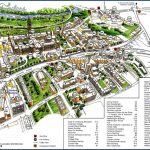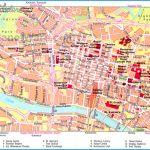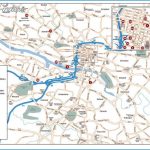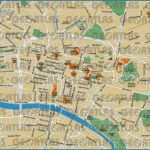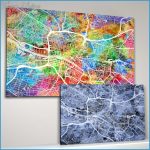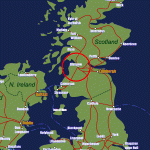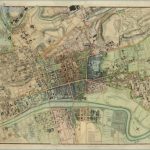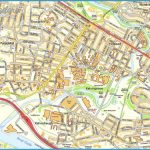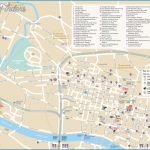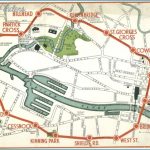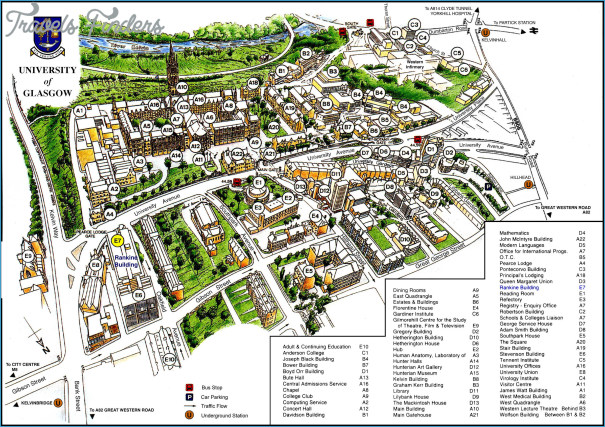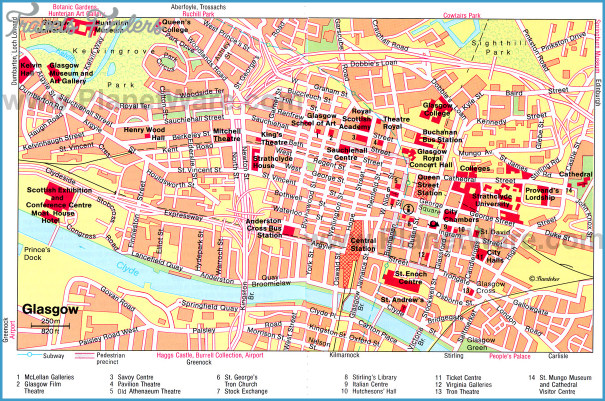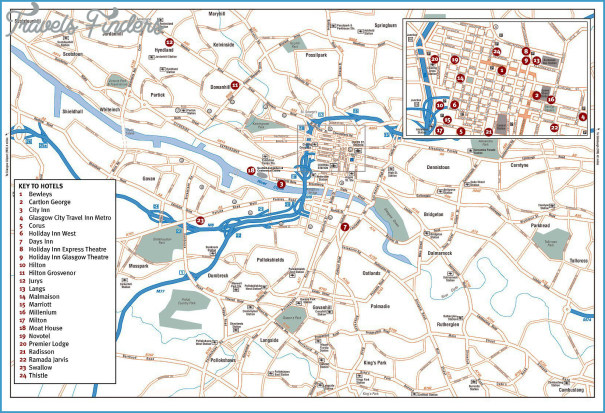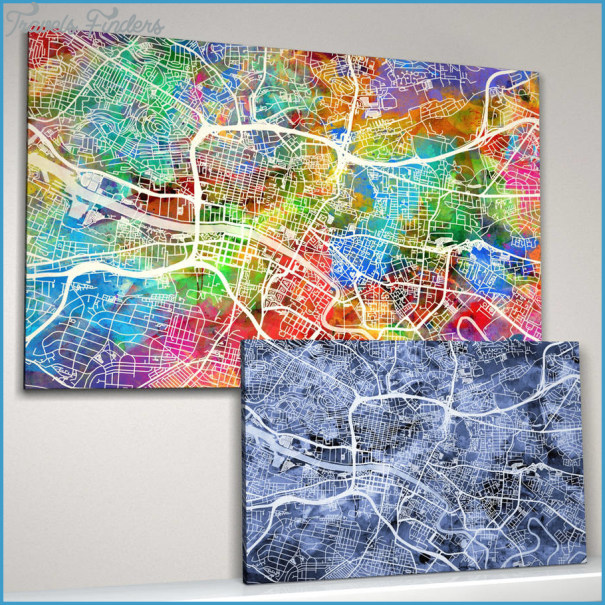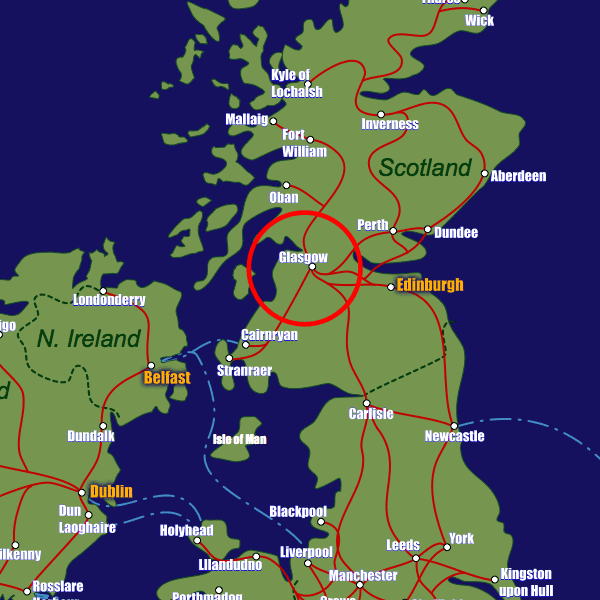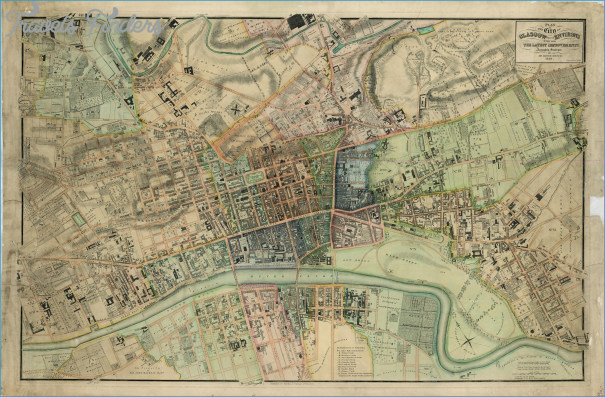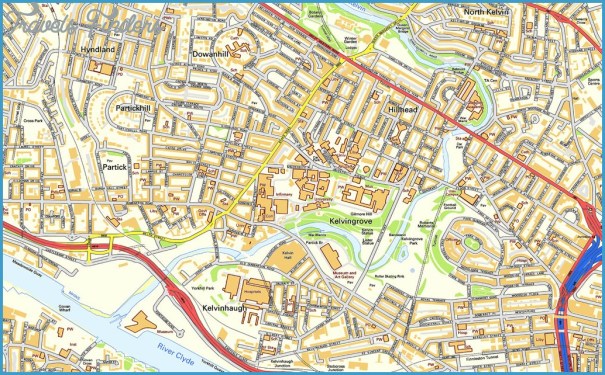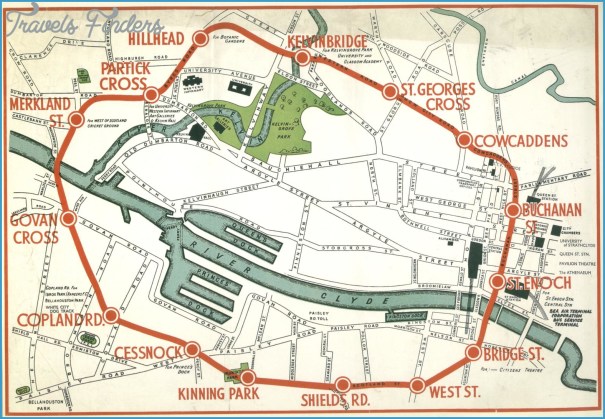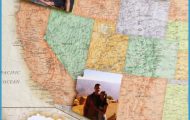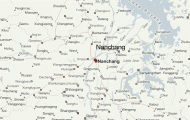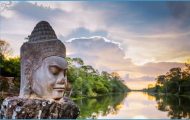Tolbooth Steeple Glasgow Cross
Architect: John Boyd
Until 1921, the Tolbooth Steeple was still part of a larger building. The steeple itself dates from 1625-7 and was built together with the original Tolbooth which housed the Town Clerk’s office, the council chamber and the city jail. The building was demolished in 1921, leaving the steeple isolated where it remains to this day.
The Briggait 64-74 Clyde Street
Sea Horses and Associated Decorative Carving Sculptor: unknown
The term ‘sea horse is taken somewhat literally on this building, which features hippocampus; the mythological beasts with horse torsos, fish tails, and what seem to be dragon wings. These creatures were erected in 1873, and sit above a portrait of Queen Victoria. The building also features more subdued elements like bearded male masks and ornamental roundels, and was originally designed as a fish market.
Map Glasgow Photo Gallery
Neptune and Ceres
Sculptor: unknown
Neptune and Ceres on the front of this six-storey Edwardian Classical-style block symbolise trade and commerce. Neptune, with a trident, holds on to a sea horse; Ceres holds a corn-stalk and is accompanied by a miniature Mercury. This rich sculpture programme on an otherwise unadorned and austere building has puzzled many. Dossed for some place ense yon Grecian chiffon can no gainstaund oor snell an blashie wather thae hie fowk on oor biggins aye war quarrelled oot’n Scotland: it wis a faur ben ploy, tae stell expansion wi bairns, lang-heidit men an dochtie caryatids: bowsome bodies help tae humanise an Empire’s architecture. Sicna slicht: no tae feel the wecht we cairy, an that we’re stickit; no tae leuk at whit’s aneath or leuk wi unseein eyes, douce white, wyteless plunkers; receive the peyment grapes, corn, televisions like it war a seilie accident o Naitur. We aye uphaud hame’s structure, a cause o it’s a shelter, but scug an airn will that it wadna mak a god oot o a greedy principle, an feel wir herts like ammonites beat in the stane whaur builders birsed thaim Dressed for somewhere else that Grecian chiffon can not withstand our sharp and rainy weather those high folk on our buildings were, all the same, quarried out of Scotland: it was a popular trick, to prop expansion with children, shrewd men and saucy caryatids: obedient bodies help to humanise an Empire’s architecture. The art’s like this: not to feel the weight we carry, and that we’re stuck here; not to look at what’s beneath or look with unseeing eyes, sweet innocent white marbles; receive the payment grapes, corn, televisions as if it were a happy accident of Nature.

